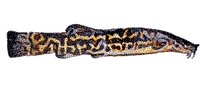Softener units and Sodium
- racoll
- Posts: 5258
- Joined: 26 Jan 2004, 12:18
- My articles: 6
- My images: 181
- My catfish: 2
- My cats species list: 2 (i:2, k:0)
- My aquaria list: 1 (i:0)
- Spotted: 238
- Location 1: London
- Location 2: UK
Softener units and Sodium
i've just dug out a kingfisher softener-king unit that i used to use for keep dwarf cichlids years ago and am planning to use now to get the GH down to a more reasonable level. some of my research has led me to believe that these units (have to be recharged with salt) can lead to increased sodium levels that may be detrimental to the fish. some more info on this would be great, thanks.
- racoll
- Posts: 5258
- Joined: 26 Jan 2004, 12:18
- My articles: 6
- My images: 181
- My catfish: 2
- My cats species list: 2 (i:2, k:0)
- My aquaria list: 1 (i:0)
- Spotted: 238
- Location 1: London
- Location 2: UK
- pleco_breeder
- Posts: 892
- Joined: 09 Dec 2003, 16:51
- My articles: 2
- My cats species list: 17 (i:0, k:0)
- Location 1: Arizona
- Interests: breeding plecos and corys
- Contact:
racoll,
The draw back to salt charged units is that the TDS and conductivity remain at approximately the same level. These units only pull the calcium and magnesium and exchange with sodium. I haven't heard of any instances where the amount of sodium became a severe issue, but it would be possible in very hard water circumstances.
Larry Vires
The draw back to salt charged units is that the TDS and conductivity remain at approximately the same level. These units only pull the calcium and magnesium and exchange with sodium. I haven't heard of any instances where the amount of sodium became a severe issue, but it would be possible in very hard water circumstances.
Larry Vires
Impossible only means that somebody hasn't done it correctly yet.
- racoll
- Posts: 5258
- Joined: 26 Jan 2004, 12:18
- My articles: 6
- My images: 181
- My catfish: 2
- My cats species list: 2 (i:2, k:0)
- My aquaria list: 1 (i:0)
- Spotted: 238
- Location 1: London
- Location 2: UK
- pturley
- Posts: 833
- Joined: 08 Jul 2003, 23:11
- I've donated: $66.00!
- My articles: 2
- My images: 16
- My cats species list: 1 (i:0, k:0)
- Spotted: 8
- Location 1: Cleveland, Ohio USA
plecobreeder wrote:
They do manufacture Ion exchange resins that are recharged with Hydrochloric acid (HCl), but from a hobbiest perspective (unless you have lots of experience handling dangerous acids) they are essentially disposable. They aren't all that cheap either!
The safest, most reliable means of softening your water (and reducing conductivity) is with a Reverse Osmosis unit. You can get a "bare bones" unit that produces ~20gallons/day for about $100 U.S. However, RO units aren't all that good at reducing Sodium levels as the ion is physically very small and passes through the membrane quite effectively.
EDIT:
Actually the TDS goes up. Calcium is 2+ ion. Sodium is 1+, the exchange rate is two Sodium ions per Calcium. Conductivity remains the same.The draw back to salt charged units is that the TDS and conductivity remain at approximately the same level. These units only pull the calcium and magnesium and exchange with sodium.
They do manufacture Ion exchange resins that are recharged with Hydrochloric acid (HCl), but from a hobbiest perspective (unless you have lots of experience handling dangerous acids) they are essentially disposable. They aren't all that cheap either!
The safest, most reliable means of softening your water (and reducing conductivity) is with a Reverse Osmosis unit. You can get a "bare bones" unit that produces ~20gallons/day for about $100 U.S. However, RO units aren't all that good at reducing Sodium levels as the ion is physically very small and passes through the membrane quite effectively.
EDIT:
Actually Larry, while I lived in Minnesota (a very hard water circumstance to be sure, up to 425 ppm!) we installed a Sodium Ion Exchange Water Softener. My Haplochromis sp. Fire Hap. and Synodontis multipuntatus colonies stopped spawning almost to the week that this was brought online. It wasn't until it was offline for well over a month that things got back to normal in my fishroom. IMHO the results were so dramatic that it certainly warrants further investigation.I haven't heard of any instances where the amount of sodium became a severe issue, but it would be possible in very hard water circumstances.
Last edited by pturley on 04 Mar 2004, 17:56, edited 1 time in total.
Sincerely,
Paul E. Turley
Paul E. Turley
- racoll
- Posts: 5258
- Joined: 26 Jan 2004, 12:18
- My articles: 6
- My images: 181
- My catfish: 2
- My cats species list: 2 (i:2, k:0)
- My aquaria list: 1 (i:0)
- Spotted: 238
- Location 1: London
- Location 2: UK




